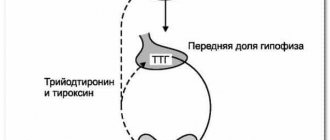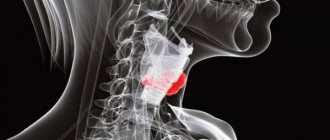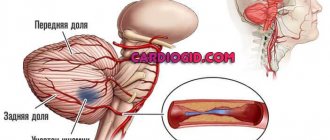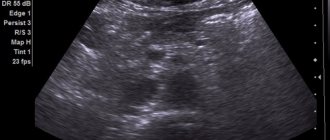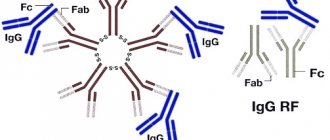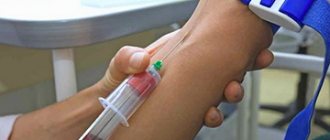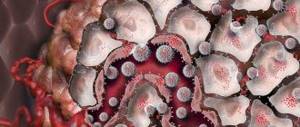Cerebral structures are extremely complex. The brain is responsible for the normal activity of the body, all functions: both voluntary and those that are not comprehended by a person. Millions of transactions take place here.
The possibility of life activity as such is determined by the electrical activity of the nervous system, the transmission of impulses along certain circuits and neural structures. All deviations from the norm are explainable from the point of view of dysfunction, disturbances in the movement of impulses along nerve fibers.
EEG of the brain is a sensitive method for assessing the functional state of cerebral structures using a special apparatus that monitors the electrical activity of the brain as a whole and individual structural components of the nervous system.
There are several modifications of the technique. In particular, there are complex diagnostic methods that reveal clinical issues in different aspects.
The study is carried out under the supervision of a neurologist, as prescribed by him. If there is a reason for it.
The abbreviation EEG stands for encephalography. This is an informative technique, but it alone is not enough. As a rule, a group of studies is carried out: including MRI, skull x-ray, and other diagnostic procedures. Based on the results, conclusions can be drawn.
The essence of the study and what it shows
Diagnostics is based on the registration of special signals from cerebral structures, which precisely indicate certain pathological processes and changes. To better understand what's what, let's turn to the anatomical certificate.
Normally, the human brain works due to spontaneous excitation, the generation of an electrical impulse and its transmission through neurons, the construction of specialized circuits and networks.
This activity causes cerebral structures to vibrate at specific frequencies. Based on this characteristic, experts identify rhythms of different intensities.
For example:
- Alpha waves, which correspond to a state of complete relaxation, half-asleep.
- Beta - during moderate concentration.
- Gamma impulses are associated with increased stress on the psyche and intellectual pursuits.
- And so on, the list goes on.
Special equipment can detect and record such electrical signals and vibrations. In a convenient form, the specialist receives information about the peculiarities of the brain.
Based on the correlation of certain cerebral impulses, the doctor can draw conclusions about the nature of the nervous system and pathological processes. Although the exact data still depends on the results of several procedures.
What can be tracked based on the results of such instrumental diagnostics:
- Brain rhythms, features of electrical activity. In general, regardless of possible pathological processes.
- The emergence of foci of increased excitation. Similar anomalies occur against the background of epilepsy, after injuries and injuries.
- Decrease or increase in the activity of certain areas of cerebral structures.
Thus, the EEG shows inflammatory, destructive, tumor, neurological disorders or indirectly indicates them.
The technique is universal in its way, but does not provide 100% data. Additional measures are needed: MRI, computed tomography, skull x-ray, ultrasound of cerebral vessels.
The encephalography technique itself is heterogeneous. There are several modifications of the diagnostic method. Including EEG, MEG, PEG and others. We will talk about them further.
What does EEG show in children and adults?
In newborns and young children, when decoding the EEG, slow waves on the electroencephalogram (delta and theta rhythm) predominate. However, by the age of one year the alpha rhythm becomes more and more active and by 8-9 years it becomes predominant. A complete EEG pattern characteristic of an adult is formed by the age of 16-18 and remains relatively stable until approximately 50 years of age.
Now about how the EEG of the brain is deciphered. A neurologist (neurophysiologist) analyzes the encephalogram and issues a conclusion, taking into account the patient’s age, his complaints, the clinical picture of existing disorders and other factors.
- The main, predominant rhythm of the encephalogram is revealed (in most healthy adults and adolescents this is the alpha rhythm).
- The symmetry of electrical potentials of nerve cells recorded from the left and right hemispheres of the brain is studied.
- Pathological rhythms present on the EEG are analyzed, for example, delta and theta rhythms in adults in a state of wakefulness.
- The regularity of bioelectrical activity and the amplitude of rhythms are checked
- Paroxysmal activity is detected on the electroencephalogram, the presence of sharp waves, peaks, spike waves
- In the absence of pathological changes in the background encephalogram, functional tests (photostimulation, hyperventilation, etc.), repeated registration of electrical potentials of the brain and EEG interpretation are performed.
Normally, the manifestations of brain rhythms in a healthy person correspond to the above values and functional states. In addition, the following signs indicate normal functioning of the nervous system:
- predominance of alpha and beta rhythms in the active state;
- synchronization of rhythms in both hemispheres;
- absence of sharp peaks of electrical activity;
- stable brain activity even in the presence of short-term reactions to light exposure and other stimulation options.
In children, slow oscillations are recorded at an early age, and the alpha rhythm is formed by the age of 7 years. The EEG of adolescents 15-17 years old already corresponds to the study of an adult. After 50-60 years, the frequency decreases and the regularity of the delta rhythm is disrupted, and the number of theta waves increases.
There are many deviations from the norm in the EEG of the brain. Determining the possible causes of brain rhythm disturbances is the task of an experienced specialist. Below are some abnormal EEG findings that may be signs of neurological, mental or speech disorders.
- Lack of synchrony and symmetry in the work of neurons in the right and left hemispheres.
- Sudden changes in rhythm frequency: acute bursts of activity and sharp declines. This happens with infections, tumors, injuries, strokes.
- Alternating peaks and valleys, high amplitude fluctuations with different frequencies, single or serial bursts of activity can be a sign of epilepsy. However, it should be taken into account that between attacks the EEG of patients with epilepsy may show normal results.
- The presence of delta and theta rhythms in a awake person indicates possible diseases or injuries of the brain.
- A number of infections, poisonings and metabolic disorders can be characterized by changes in brain activity in several areas at once.
- In a coma and when the nervous system is suppressed by potent drugs, zero electrical activity in the brain can be observed. This happens when the flow of blood to the brain is disrupted and it stops functioning.
Decoding the EEG results consists of three sections:
- description of leading types of activity and graphic elements;
- conclusion after description with interpreted pathophysiological materials;
- correlation of the indicators of the first two parts with the clinical picture of the disease.
The main descriptive term in EEG is "activity". He evaluates any order of waves. The main types of activity that are recorded during the study and subsequently subjected to decoding, as well as further study, are the frequency, amplitude and phase of the waves. Frequency is measured by the number of wave oscillations per second. It is expressed in units of measurement - hertz (Hz). In the description, the neurophysiologist indicates the average frequency of the activity being studied.
Amplitude is the range of wave oscillations of the electrical potential. It is measured by the distance between the peaks of waves in opposite phases, expressed in microvolts (µV). A calibration signal is used to measure the amplitude. When interpreting the results, neurophysiologists interpret the most common values, completely excluding the rare ones.
The phase evaluates the current state of the process and determines its vector changes. Using an electroencephalogram, functional diagnostic doctors evaluate certain phenomena and evaluate the phases they contain. Oscillations are monophasic, biphasic and polyphasic.
In order to decipher the EEG and provide accurate results, without missing any of the smallest manifestations in the recording, neurophysiologists take into account all the important points that may affect the indicators being studied, such as:
- patient's age;
- the presence of certain diseases;
- possible contraindications.
After collecting all the EEG data and processing it, the functional diagnostics doctor conducts an analysis and generates a final conclusion, which he provides for making a further decision on the choice of therapy method. Any disturbance in activity may be a sign of diseases caused by certain factors.
EEG disorders are considered:
- constant fixation of the alpha rhythm in the frontal lobe;
- constant violation of wave sinusoidality;
- presence of frequency dispersion;
- exceeding the difference between the hemispheres by up to 35%;
- amplitude below 25 μV and above 95 μV.
The presence of violations of this indicator indicates possible asymmetry of the hemispheres. This may be the result of malignant neoplasms or cerebral circulatory disorders (ischemic or hemorrhagic stroke). A high frequency indicates traumatic brain injury or brain damage.
If a high amplitude of the delta rhythm is detected, the neurophysiologist can assume the presence of a space-occupying tumor in the brain. Inflated values of the theta and delta rhythm, which are recorded in the occipital region, indicate impaired circulatory function, inhibition and a delay in the development of the child.
What diseases can be detected
The instrumental method is nonspecific. This means that it is impossible to make a diagnosis based on the results alone.
There will remain room for doubts and questions until additional clarifying procedures are carried out.
Still, the method may prompt some thoughts. What diagnoses can be suspected based on the results of encephalography:
Epilepsy
The disease is complex and multifaceted. Contrary to popular belief, it does not always manifest itself “in all its glory”: foam at the mouth, spasms and convulsions, loss of consciousness and falling.
Insidious, silent variants of the pathological process are also possible. When the disease is discovered by chance and as a result of diagnosis for other disorders.
The diagnosis of epilepsy can be made based on the results of encephalography. As a rule, the technique is used several times. To finally verify the essence of the deviation.
Organic and other psychoses
That is, those disorders that directly disrupt the normal biochemistry of cerebral structures. For example, schizophrenia, the consequences of consuming drugs, alcohol, and certain drugs.
An imbalance in brain rhythms is detected as a result of insufficient or excessive signal movement along neurons.
Of course, it is impossible to establish the origin of the violation. To do this, you need to collect anamnesis and monitor the patient for at least several weeks.
Insomnia
As an independent disease or syndrome against the background of one or another pathological process.
The EEG technique is used for routine assessment of the situation, and to obtain more data, doctors resort to studying the circadian rhythm of the brain. This is much more difficult in terms of conducting and deciphering the results.
Psychosomatic disorders
For example, the notorious vegetative-vascular dystonia, which, in fact, is not an independent diagnosis at all. Here again problems of interpretation arise. To understand the essence of the violation, you need to know the context of the situation - it will help you draw conclusions and make an accurate diagnosis.
An EEG is an examination that allows you to identify inflammatory, degenerative, intoxicating, and tumor processes, but only halfway, since a lot of questions remain.
Based on the diagnostic results, the doctor either puts forward a hypothesis regarding the situation or verifies a previously defined pathological process. Depends on the order of examinations.
How is an EEG performed?
A cap with attached sensors filled with electrically conductive gel is placed on the patient’s head. They are connected by wires to an encephalograph, which builds graphs on the monitor in accordance with the obtained indicators.
The examination is carried out while the patient is awake (the person being examined must close his eyes with his eyelids and relax), less often - while sleeping. The procedure lasts about an hour, sometimes all night under the supervision of a doctor.
If the patient needs an encephalogram during the sleep phase, he must remain awake for a day and a half in order to fall asleep at the time of testing. Before the procedure, the doctor will give you a sedative to take, which will put you to sleep during the examination.
The brain waves detected by the sensors are amplified and displayed as a graph on the monitor. Subsequently, the graphs are printed on paper. Deciphering the received graphs will take several days. Experts, having analyzed the frequency and amplitude of the waves, make a conclusion, as evidenced by the electroencephalogram.
Indications
The reasons for a brain encephalogram are inflammatory, tumor, neurological diseases and individual symptoms that, theoretically, may indicate a problem.
Specific indications include:
- Insomnia. Various types. Some patients cannot enter a state of rest at all. Others quickly “pass out”, but just as quickly jump up and remain awake all night. And so on.
Insomnia is often associated with neurological problems. Therefore, encephalography is one of the first to be performed to exclude functional disorders.
- Pathologies of the endocrine system. Hormonal imbalances have the potential to alter normal brain function. An encephalogram is used to study the extent to which certain abnormalities affect the activity of cerebral structures.
First, the level of hormones as a whole is measured, and expanded data on the diseased organ is obtained (thyroid, pituitary gland, adrenal glands, pancreas, reproductive structures).
- Dizziness. Disturbances in normal coordination of movements. Movement disorders. What they are connected with, what caused the symptoms, is another question. We'll have to look into it separately and factually.
- Fainting. Impaired consciousness. Syncope is usually caused by disorders of cerebral blood flow and ischemia of brain tissue. There are options. Encephalography will just help to understand the situation.
- Suffered a stroke. Acute disturbance of blood flow in the brain. Affects the nature of the work of cerebral structures, the speed and quality of transmission of nerve impulses. A break in some of the established neural circuits cannot be avoided.
An encephalogram of the head provides an opportunity to assess the nature of the problems, their degree, and the exact location of the disorder.
In addition, tomography is performed to study anatomical and structural disorders in addition to functional ones.
- TBI, neck injuries. Because they rarely go away without consequences.
- Headache. Any location and intensity. The origin again remains a mystery for the time being. Until a full and comprehensive diagnosis is carried out.
- Nausea, vomiting for no apparent reason. Especially if they are repeated on a regular basis.
- Seizures similar to epileptic.
- Convulsions of unknown origin. May be associated with disorders of the central nervous system.
- Previous or suspected inflammation of the brain. Encephalitis, meningitis. The point is to study how much cerebral structures are affected. Also, in this way it is possible to study the effectiveness of the treatment.
- Coma. As part of monitoring the electrical activity of nerve tissue. As soon as the rhythms begin to fade, this is an unfavorable sign. It is corrected in the format of maintaining basic body functions.
- Suspected brain tumors, neoplastic processes.
- Mental development disorders. Usually we are talking about younger patients. Special stimulant drugs are prescribed as needed.
- Mental disorders. Oddly enough, in this way it is possible to study the effectiveness of medications, antipsychotics and others. Based on the results, one can judge the restoration or, on the contrary, regression of brain functions and the quality of therapy.
- Preoperative preparation. Encephalography is mandatory.
- Study of the patient's condition after surgery.
These are the key indications.
Electroencephalography is well tolerated, can be repeated several times, does not create a harmful load on the body and is recommended for patients of all ages; contraindications include acute conditions and pathologies that preclude adequacy.
EEG rhythms
In the electroencephalogram, four main EEG rhythms of the brain can be distinguished - alpha, beta, delta and theta.
- The alpha rhythm (or alpha waves) is the main component of the encephalogram of a healthy adult (registered in 85-90% of people). Such waves normally have a frequency of 8 to 13 hertz (oscillations per second) and are predominant during the waking state (when the patient lies quietly with his eyes closed). Maximum alpha activity is determined in the occipital and parietal regions.
- The beta rhythm, like alpha waves, refers to normal manifestations of human functional activity. In this case, the vibration frequency is 14-35 per second, and they are recorded mainly over the frontal lobes of the brain. The beta rhythm of the EEG appears when the sensory organs are irritated (touch, light, sound stimulation), movements, and mental activity.
- The delta rhythm (frequency 0.5-3 Hz) when deciphering the EEG is found normally in a child of the first year of life, sometimes partially remaining until the age of seven. Subsequently, delta waves are recorded mainly during sleep.
- The theta rhythm of the encephalogram (frequency from 4 to 7 vibrations per second) is normally found in children from 1 to 6 years old, gradually being replaced by the alpha rhythm as they grow older. Theta activity is also observed during sleep, including in adults.
The electroencephalogram must show a regular rhythm of a certain type. The regularity of rhythms is ensured by the work of the part of the brain - the thalamus, which generates them and ensures the synchronization of the activity and functional activity of all structures of the central nervous system.
The human EEG contains alpha, beta, delta and theta rhythms, which have different characteristics and reflect certain types of brain activity.
The alpha rhythm has a frequency of 8 – 14 Hz, reflects a state of rest and is recorded in a person who is awake, but with his eyes closed. This rhythm is normally regular, the maximum intensity is recorded in the area of the back of the head and the crown. The alpha rhythm ceases to be detected when any motor stimuli appear.
The beta rhythm has a frequency of 13 – 30 Hz, but reflects states of anxiety, restlessness, depression and the use of sedative medications. The beta rhythm is recorded with maximum intensity over the frontal lobes of the brain.
The theta rhythm has a frequency of 4–7 Hz and an amplitude of 25–35 μV, reflecting the state of natural sleep. This rhythm is a normal component of the adult EEG. And in children this type of rhythm on the EEG predominates.
The delta rhythm has a frequency of 0.5 - 3 Hz, it reflects the state of natural sleep. It can also be recorded in a limited amount during wakefulness, a maximum of 15% of all EEG rhythms. The amplitude of the delta rhythm is normally low - up to 40 μV. If there is an excess of amplitude above 40 μV, and this rhythm is recorded for more than 15% of the time, then it is classified as pathological.
Such a pathological delta rhythm indicates a dysfunction of the brain, and it appears precisely over the area where pathological changes develop. The appearance of a delta rhythm in all parts of the brain indicates the development of damage to the structures of the central nervous system, which is caused by liver dysfunction, and is proportional to the severity of the disturbance of consciousness.
Contraindications
Here are some reasons for refusing the examination:
- Extensive wounds after surgery. Because the affected area simply cannot be disturbed. Infectious problems, suture dehiscence and other pathological consequences are possible.
- Acute psychoses. Because the patient simply cannot sit through the entire procedure calmly and without moving. This eliminates the physical possibility of conducting research.
- Untreated injuries, wounds in the head area. Which is due to the same reasons: you can get an infection or harm a person even more.
- Septic diseases, processes. Up to the banal ARVI, which is associated with obvious distortions of brain rhythms. We need to wait for the right moment.
The list of contraindications is minimal. These are relative options. Once the base is gone, exploration can be done.
Indications for EEG
Both adults and children can undergo this procedure, due to the fact that this study of the cerebral cortex is absolutely safe and painless.
Today, it is increasingly used before obtaining a driver's license and a license to carry a weapon. For medicinal purposes it can be prescribed in the following cases:
- After direct surgery;
- To identify cysts and tumor formations;
- For open and closed head injuries of varying severity;
- Frequent headaches, dizziness
- To confirm the development of epilepsy, cerebral palsy, SVD;
- When convulsive seizures, numbness of the limbs, fainting occur;
- For hypertension;
- If there is a delay in the development of mental indicators in a child and possible speech problems (stuttering, etc.).
- To assess the effectiveness of drug therapy;
Basically, the study of the brain using EEG is carried out by a neurologist, although a psychiatrist or neurophysiatrist can also give a referral.
Types of EEG and their differences
There are 5 modifications of the method.
- The classic method is electroencephalography - a non-invasive diagnosis that is based on measuring the electrical potentials of the brain and the total activity of cerebral structures. This is the most accurate way to study the condition of nerve tissue.
On the other hand, he is very sensitive. An awkward micro-movement is enough to blur the results.
At the same time, the results are affected by stress factors and the patient’s tension. And decoding is very difficult when the doctor is not experienced enough. There is a high risk of error.
- If classical EEG examines the electrical activity of the brain, rheoencephalography (abbreviated REG) focuses on the state of blood vessels. The essence of the technique is the effect on cerebral structures of a low-power current.
Based on the response, the doctor draws conclusions about the condition of the vascular walls, their conductivity and other characteristics. This is a very specific examination method.
- Echoencephalography (EchoEG) is used to assess the anatomical state of the brain. The technique is based on the reflective ability of the tissues of cerebral structures and the density of the substance.
Using echoEG, you can diagnose tumors and other space-occupying formations, and displacement of brain tissue. Which is very important in the early stages, because later treatment becomes unlikely.
- Pneumoencephalography (PEG) is extremely specific. The technique is based on filling the drainage system of the brain with air. It is injected in small quantities through a puncture in the lumbar region.
The technique allows you to measure pressure in the conduction system, assess the likelihood of ventricular dislocation and intracranial hypertension. These are indirect signs of several possible pathologies.
- Finally, magnetoencephalography (MEG), a visual method for assessing the electrical activity of the brain. Using special sensors, the desired indicator is recorded, after which, in visual form, the doctor receives a full-format picture of the distribution of impulses.
This is very convenient, since both foci of increased activity and shifts relative to the norm are visible. The method is used both in medicine and in theoretical scientific research.
As can be judged from the descriptions, none of the methods practically overlaps with the other. They face completely different goals and objectives.
Therefore, these methods can be prescribed in a system determined by a doctor.
What does EEG show in children and adults?
An electroencephalogram reflects the functional state of brain structures in various human states, for example, sleep, wakefulness, active mental or physical work, etc. An electroencephalogram is an absolutely safe method, simple, painless and does not require serious intervention.
Today, the electroencephalogram is widely used in the practice of neurologists, since this method makes it possible to diagnose epilepsy, vascular, inflammatory and degenerative lesions of the brain. In addition, EEG helps to determine the specific location of tumors, cysts and traumatic damage to brain structures.
An electroencephalogram with irritation of the patient by light or sound makes it possible to distinguish true visual and hearing impairments from hysterical ones, or their simulation. EEG is used in intensive care units for dynamic monitoring of the condition of patients in a coma. The disappearance of signs of electrical activity of the brain on the EEG is a sign of human death.
- Registration of EEG during an epileptic seizure allows us to record high-amplitude paroxysmal activity in the form of peak waves and sharp waves
- Outside of an attack, the convulsive readiness of the brain may not appear, so various tests are used to provoke epileptic activity. Often evidence of paroxysmal activity is the presence of high-voltage theta and delta waves
- For long-term recording of the brain encephalogram, you can use EEG monitoring or video-EEG monitoring (registration of an electroencephalogram and video recording of the patient’s behavior for 3-8 hours, sometimes throughout the day) with subsequent decoding.
Preparation
No special events needed. All you have to do is come to the clinic. The only exception is pneumoencephalography, but this is a very specific technique that is rarely used due to its invasiveness and a lot of discomfort for the patient.
During the examination, the person must sit or lie still. The fewer voluntary movements, the higher the information content of the technique.
You also need to maintain maximum peace. If there is such a need, it is permissible to use sedatives several hours before the test.
Standard herbal remedies such as chamomile, motherwort or valerian will do. The main thing is not with alcohol. Decoctions and infusions are allowed.
It is highly advisable to follow these basic rules the day before the examination:
- No smoking.
- Do not drink alcohol, coffee, tea.
- You need to remove metal jewelry right in the office.
Preparation for an EEG of the brain means abstaining from psychotropic substances, stimulants, including those of natural origin, and also following all instructions from the doctor’s assistant or the specialist himself.
How to prepare for an encephalogram
The accuracy of the examination data will be ensured by the correct preparation of the patient for the EEG and his responsible behavior during the procedure. Preparatory stage rules:
- 2-3 days before the EEG, you need to stop taking certain medications (anticonvulsants, tranquilizers) to avoid distortion of the indicators. Tell your doctor what medications you regularly take.
- During the day you cannot drink carbonated drinks (Coca-Cola), tea, all kinds of energy drinks, and alcohol. Avoid stimulating coffee and chocolate.
- Do not smoke 3-5 hours before the EEG.
- You should wash your hair without using conditioners, foams, or masks.
- You need to eat (light meals), when the stomach is empty, the blood sugar level increases.
- Immediately before the procedure:
- remove all jewelry (earrings, hair clips, piercings);
- loosen restrictive clothing parts (tight belts, neck scarves);
- take a comfortable position, close your eyes;
- try not to make unnecessary movements, not to be nervous, not to react to light flashes or noises of the device.
Progress of the procedure
It all depends on the specific technique and its modifications. In general, the algorithm will be like this:
- The patient lies down on a couch or sits on a chair. It is important to relax as much as possible and suppress the feeling of internal tension.
- The doctor or his assistant lubricates the areas where the sensors are applied with a special gel. This is necessary in order to facilitate the conduction of the signal and its registration.
- A special network of sensors (cap) is placed on the head, which will record brain activity.
- The next step is to check the operation of the device.
- The encephalograph records the diagnostic results, builds a special graph and displays the information on the monitor or in printed form (depending on how old the device is in a particular institution).
If necessary, special functional tests are carried out. They do not pose any particular difficulty for the patient. The doctor gives instructions.
Among them:
- Close/open your eyes.
- Make a fist, relax your hand.
- Breathe hard, quickly and often.
- Noise and light stimuli are also used. This is somewhat uncomfortable, but quite tolerable.
The readings are then recorded again. The sensors are removed from the patient. A person receives the result in their hands after 10-20 minutes or at any other time by agreement.
An EEG with stress tests shows the brain’s reaction to a stress factor, a voluntary motor act, and describes the adaptive abilities of the nervous system. This is significant.
There are other options. For example, when conducting 24-hour encephalography, rhythms are recorded longer, and so on.
What is this procedure
After an MRI, which will show whether there are any organic brain abnormalities (for example, tumors), it is necessary to undergo an EEG (electroencephalogram). This is a modern examination method that allows you to assess the condition of neurons in the cerebral cortex. Each of the many neurons has bioelectrical activity and generates an electrical impulse transmitted along its processes to other cells. These impulses can be detected by special devices and the functionality of nerve cells can be analyzed.
The sensors of the EEG device detect the electrical waves of the brain, and an electroencephalogram is plotted on the monitor. Based on the curves obtained on the screen, the neurophysiologist can analyze the state of the brain and make a conclusion. The method is safe, non-invasive (non-invasive - without going inside).
The scan allows you to assess the usefulness of the functioning of individual areas of the brain. The doctor pays special attention to changes in brain biorhythms in the EEG during migraine. The EEG clearly records the impulses of the brain, which makes it possible to track the rhythm and consistency of all neurons in certain parts of it. The data received from the sensors is processed by a special computer program, displaying several graphs on the monitor.
The age of the patient, the period of activity (sleep, wakefulness), and the condition of the person being examined are taken into account. The rhythms reflect a person’s mood, medication intake, anxiety, etc. For more complex studies, various tests are used (flashes of light, sharp sounds, mental stress) in which biorhythms are recorded.
Decoding the results
Interpretations should be carried out by specialists. Because it’s not easy to figure it out on your own.
Here is a specific example of a diagnostician’s conclusion based on a patient’s EEG:
If translated from medical into Russian, these are minor disorders of the brain. Let's figure it out in order.
- Alpha rhythms are predominantly recorded during diagnosis, since they are responsible for the patient’s state during relaxation. The normal frequency is 8-13 Hz (we have 6-7).
- As for microvolts, the indicator is no more than 100. There are mild deviations from the adequate limit.
- Disorganization can be either an acceptable option (with fatigue, stress), or the result of pathology against the background of blood flow disorders.
- RFS is rhythmic photostimulation. Special diodes are placed in front of the patient's eyes, irritating cerebral structures. In our case, the indicators increased slightly, within normal limits. This rules out epilepsy (which is the first thing they look for).
The reaction in the occipital leads is within the desirable range, since this is where the visual cortex, the final segment of the visual analyzer, is located.
- HV is hyperventilation. That is another functional test. The replacement of the alpha rhythm is due to the gradual relaxation of blood vessels, which is also explainable from an anatomical point of view by the saturation of the body with oxygen and changes in blood acidity.
In any case, deciphering EEG indicators falls on the shoulders of the doctor and is based on the study of rhythms of different types, their frequency and intensity, and the results of functional tests.
Decoding indicators of age-related changes
Decoding of the electroencephalogram of the brain in a premature baby during the period of 25-28 weeks of gestation appears in the form of bursts of slow delta and theta waves, which in some places are combined with sharp waves, lasting 3-15 seconds, against a background of low low-amplitude activity (up to 25 μV).
In full-term babies, EEG indicators are clearly defined between the state of wakefulness (with an episodic frequency of 5 Hz and an amplitude of 50-60 μV), the state of active sleep (a constant frequency from 5 to 7 Hz and rapid fluctuations of low amplitude) and quiet sleep, characterized by high-amplitude delta bursts waves
During the period of 3-6 months of a baby’s life, the number of theta waves is steadily increasing, while delta waves, on the contrary, are experiencing a decline. From 7 to 12 months of a baby’s life, the alpha rhythm begins to form, and theta and delta waves begin to decrease. From 1 year to 9 years, EEG indicators show a gradual disappearance of slow rhythms, which are replaced by faster alpha and beta rhythms. Then, up to the age of 15, the alpha rhythm predominates, after which the final formation occurs by the age of 18.
Stable wave performance from age 21 remains virtually unchanged and persists until age 50. From this same age, the EEG spectrum begins to change and is expressed in a decrease in the amplitude of the alpha rhythm and an increase in beta and delta waves. The predominant frequency after 60 years begins to gradually decrease. At this age, even in a person in the absence of pathologies, theta and delta waves begin to appear on the encephalograph.
Depending on age (from 1 to 21 years), “healthy” indicators in patients from 1 to 15 years are observed on average in 70% of cases, from 16 to 21 – in 80% of cases.
Preparing for an EEG
To prepare for the procedure, stop taking anti-seizure medications three days before the examination. Do not use additional hair care products. Let down your long hair and remove any jewelry.
When preparing a child, he must be reassured and made clear that he will not be harmed or hurt.
EEG is not performed on people who have a cold or viral disease.
The examination is carried out while the child is sleeping, which makes it possible to accurately assess the baby’s condition and quickly detect pathological changes to prevent the development of serious consequences. To register the EEG, a special cap is put on the child’s head, and the doctor places electrodes under it. The scalp is pre-wetted with gel or water. Two inactive electrodes are applied to the ears, which are connected using clamps to the wires connected to the device. The current strength is small, which makes the examination a completely harmless procedure. Electroencephalogram is absolutely safe even for infants. A timely examination will detect the disease at an early stage. Indications for which an EEG of the child’s brain is performed:
- Injuries or bruises
- Monitoring the baby in the first year of life
- Migraine, fainting, dizziness
- Increased nervousness
- Insomnia


